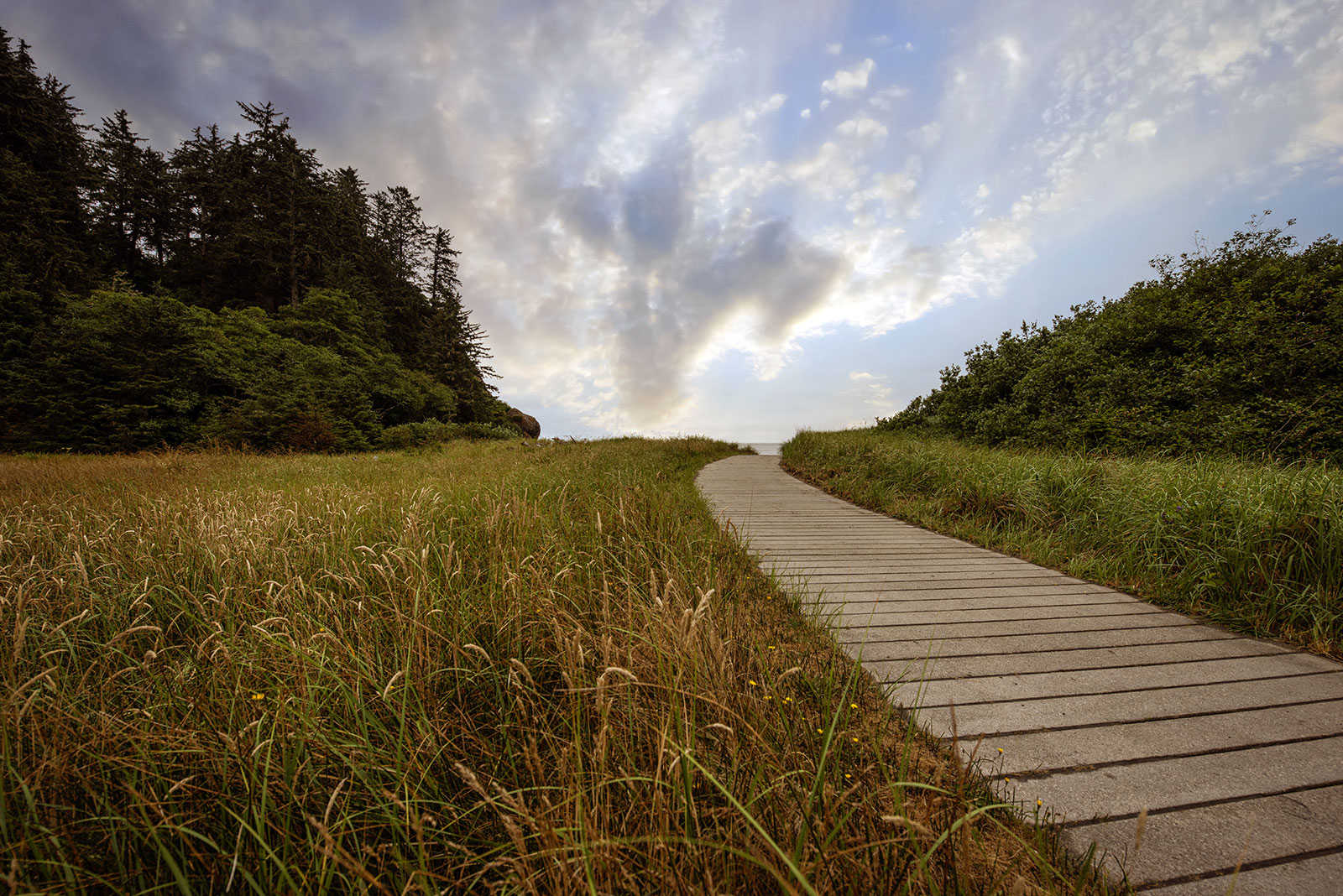
A Confluence of Peregrinations and Prayers
At Cape Disappointment near the mouth of the Columbia River, Maya Lin’s walkway and boardwalk present juxtaposing journeys of discovery.
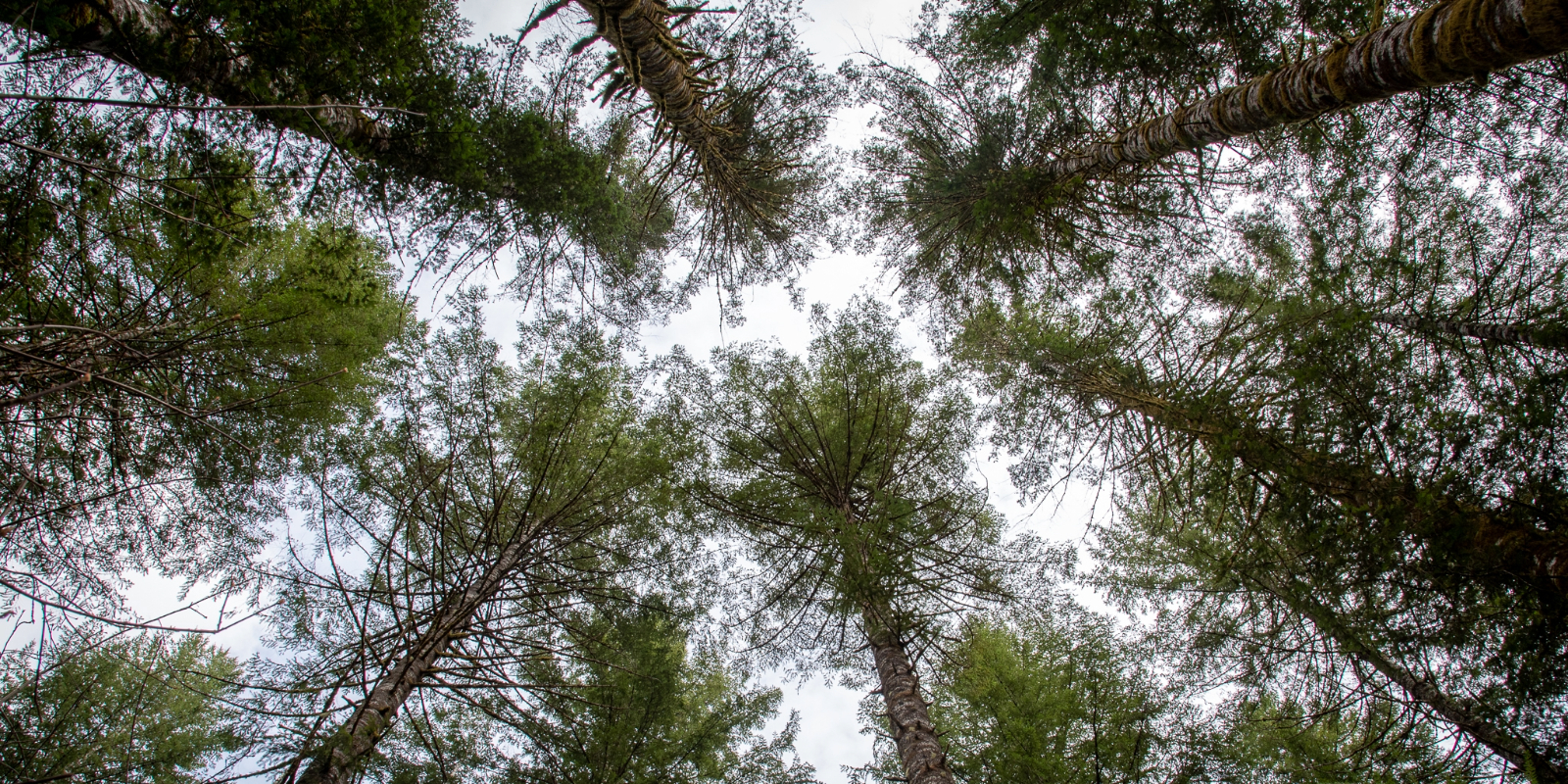
Forest bathing is a Japanese concept that boasts mental, physical, and spiritual benefits—as well as a good excuse to return to a childlike curiosity about the world around you.
BY LAURA J. COLE | September 11, 2023
To be clear, forest bathing isn’t a hike—well, not technically.
It could be more of what Henry David Thoreau extols as the noble “art of Walking,” by which he means sauntering with no clear destination in mind other than where your whimsy takes you.
But the reality is that to get the benefits of forest bathing, you need not move at all. You could simply sit or splay out along the floor of a forest and take in the world around you.
The phrase “forest bathing” comes from the Japanese shrinrin-yoku (森林浴) and according to Qing Li, author of Forest Bathing: How Trees Can Help You Find Health and Happiness, “Shinrin in Japanese means ‘forest,’ and yoku means ‘bath.’ So shinrin-yoku means bathing in the forest atmosphere, or taking in the forest through our senses.”
The sensory experience reigns over exercise and hitting step count goals. In fact, the hourlong guided forest bathing experience I participated in through Nordic Northwest included fewer than 700 total steps (I know, a Japanese experience through a Nordic organization? I’ll get to that.). It began with yoga and included a saunter along a short path with stops to focus on each of the five senses in an attempt, like the yoga warm up, to refocus on our breathing and the here and now while strengthening and deepening our mind-body connection.
I was suddenly back in Florida, snapping the twigs of a camphor tree and smelling its cinnamon release; I was back sitting and talking with my friend while peeling the yellow, wrinkly skin from the fruit of her chinaberry tree.
Dustin Marchello, an ISA-certified arborist, led the forest bath, pointing out and sharing information and jokes about the plants along our stroll. He pointed out the buds on an American filbert and how in the right light the leaves shimmer like a vampire in sunlight. He asked us to listen to the birds chirping and the sound of the wind rustling the branches. He asked us to pick out and hold a Douglas fir cone while he told the indigenous legend of the Douglas fir pine cone and the mouse.
As I smelled the sap from the cone, he asked us to close our eyes and “ponder the first tree you ever met.” Fighting off my cynicism, I was suddenly back in Florida under the massive live oak across the street from the house I grew up in. Tucked inside its towering canopy, I stood looking up as my friends crawled along the elephantine branches that extended from the ground up to its dizzying heights. I was suddenly back snapping the twigs of a camphor tree and smelling its cinnamon release; I was back sitting and talking with my friend while peeling the yellow, wrinkly skin from the fruit of her chinaberry tree.
There, under the shade of Douglas firs, I was also transported back into my childhood and far away from the stress and worries of work and politics and life.
And that, ultimately, is the aim of forest bathing.
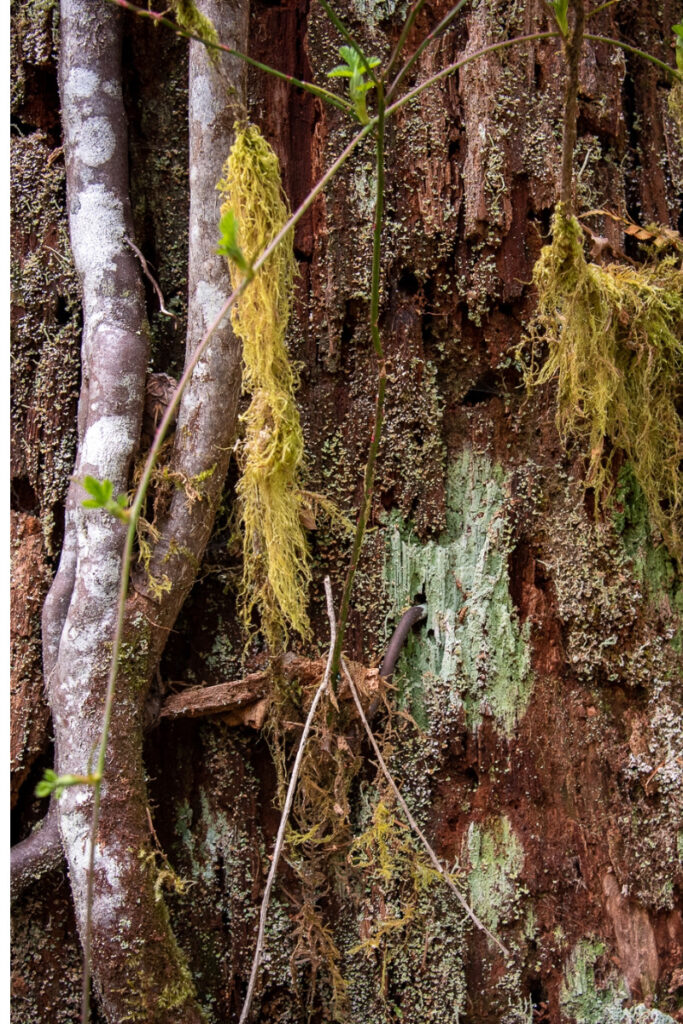
prompts for forest bathing on your own
There are plenty of trails, parks, and outdoors spaces across the Pacific Northwest ideal for Forest Bathing. Here’s a few ways to start on your own:
Listen – to the birds, the leaves rustling in the wind, the twigs snapping beneath your feet
Look – at the colors around you, the sunlight filtering through the leaves, the different shades of green and brown
Smell – the fragrance of the trees and the soil and breathe in the phytoncides
Taste – the freshness of the air or a fresh marionberry growing along the trail
Touch – the trunk of a tree, dip your fingers or toes in the water, feel the sun—or rain—on your face
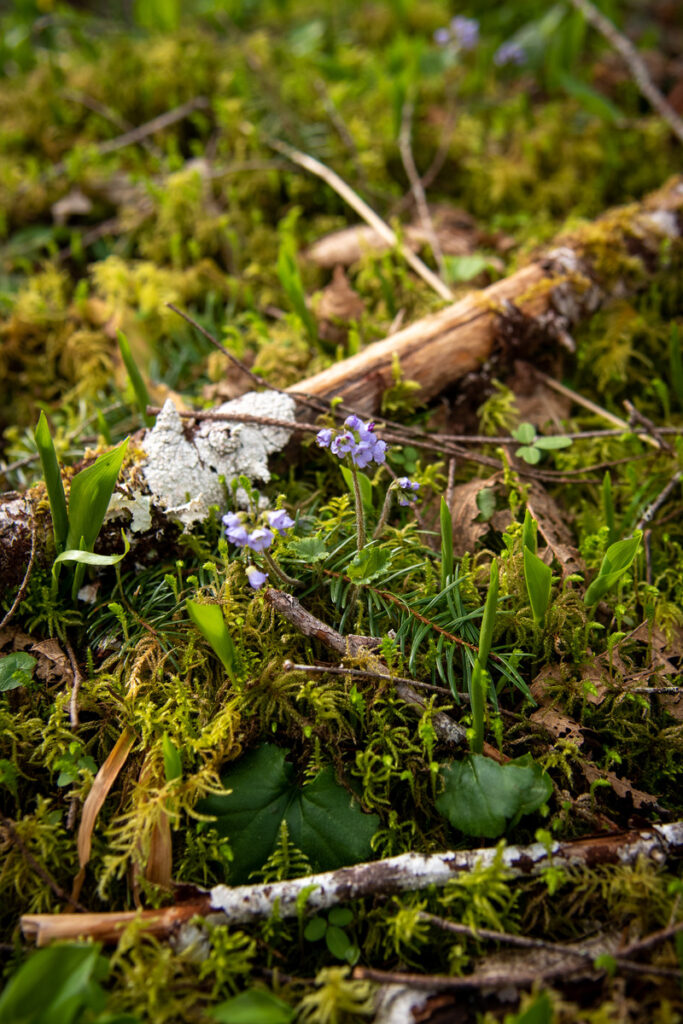
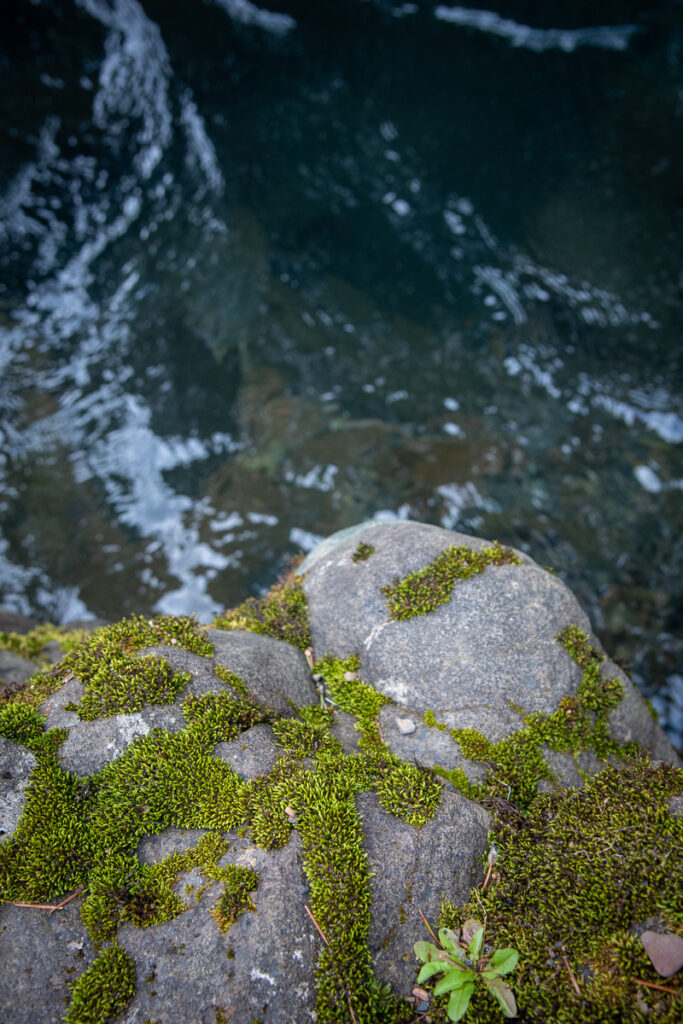

The term was coined in 1982 by Tomohide Akiyama, then director of the Japanese Ministry of Agriculture, Forestry, and Fisheries. And its goal was twofold: to improve human health by encouraging time spent in nature and protecting forests by showing the benefits of doing so. The benefits of walking and spending time in nature have long been discussed. Nearly two hundred years ago, Thoreau wrote in his lecture “Walking,” “I think that I cannot preserve my health and spirits, unless I spend four hours a day at least—and it is commonly more than that—sauntering through the woods and over the hills and fields, absolutely free from all worldly engagements.”
So few of us have four hours a day to dedicate to sauntering, but Japanese researchers were interested in seeing if any scientific proof of this long-held belief could be found. And in 1990, a preliminary research group went to Yakushima—a rainforest off the southern coast of Japan known for its ancient sugi, or Japanese cedar, trees—to do an initial investigation into the benefits of forest bathing, which are said to include lower blood pressure, blood glucose levels, and stress hormones.
Over a decade later, in 2004, the Forest Therapy Study Group was founded to formerly investigate the link between human health and forests. The first trial involved 12 middle-aged businessmen from Tokyo spending three days in Iiyama, a city roughly four hours from Tokyo and known as Japan’s eternal hometown because of the pastoral landscape memorialized in popular folk songs, including “Furusato” and “Oborozukiyo.” Two years later, Iiyama became the first of now 65 locations across Japan to become a certified forest-therapy base. Over the span of eight years, the Japanese government invested $4 million in developing shinrin yoku as a national health program. Today, the U.S., Australia, Canada, Finland, New Zealand, Singapore, South Korea, and Sweden have joined Japan in investing in research and nature interventions to treat mental health issues with a growing number of physicians worldwide writing formal prescriptions to spend more time in nature. And in 2019, the Woodland Trust in England recommended it among a range of non-medical therapies.
Forest bathing is said to help with everything from better sleep and improved overall mood to decreased anxiety, depression, and anger and an increased immune system.
It’s called salim yok in South Korea, where the government invested $140 million in a National Forest Healing Center and another $100 million to build a forest healing complex near Sobaeksan National Park. Singapore spends $150 million annually to incorporate greenery in every aspect of building new spaces and is now considered one of the top biophilic cities in the world. And in Finland, they did research and found that five hours a month in nature—even in a city park with pavement, crowds, and some street noise—is the recommended “minimum dose” to stave off depression. Which is it not surprising considering that in the 1850s the Norwegian playwright Henrik Ibsen popularized the term friluftsliv, which translates to “open-air living” and describes the spiritual and physical benefits of spending time in remote locations. (Hence a Nordic organization offering a Japanese experience.)
In fact, I’ve read articles since forest bathing that claim it can help with everything from better sleep and improved overall mood to decreased anxiety, depression, and anger and increased immune system. Some of these are attributed to phytoncides, essential oils produced by plants to defend themselves against insects, bacteria, and fungi. According to research conduct by Li in 2010, when we breath in phytoncides, they release chemicals in our bodies which bolster our immune system by increasing natural killer cell activity–purported to kill tumors and virus-infected cells—and the effect can last for more than 30 days after a trip to the forest.
A more recent study by the University of New Mexico found that a single session can provide a feeling of peace, but similar to psychotherapy, yoga, and tai chi, for the full benefits to be realized, participants need to incorporate it as an ongoing practice in their life.
And I, for one, am certainly not opposed to microdosing—or overdosing—forest bathing as needed. Part of the reason I moved to the Pacific Northwest was to spend more time in nature—hiking, kayaking, chasing waterfalls, and spending time among the towering evergreens. And hopefully to find more time to simply ponder the trees.
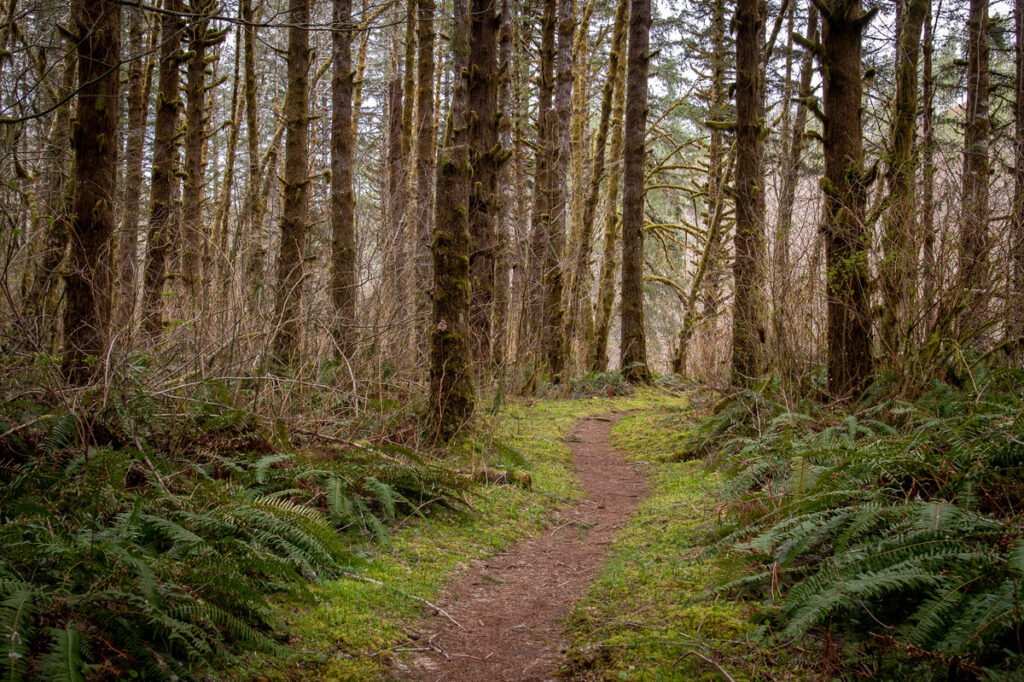
Where to Do guided Forest Bathing in the Pacific NorthwesT
4 Elements Yoga
Cascadia Forest Therapy
Forest Bathing Portland Meetup
Forest Therapy PDX
Hoyt Arboretum
McMinnville Parks and Recreation
Nordic Northwest
Pacific Crest Forest Bathing
Portland Audubon
Red Cedar Forest Therapy
Rooted Presence (Bend, Oregon)
Washington Park Arboretum


At Cape Disappointment near the mouth of the Columbia River, Maya Lin’s walkway and boardwalk present juxtaposing journeys of discovery.
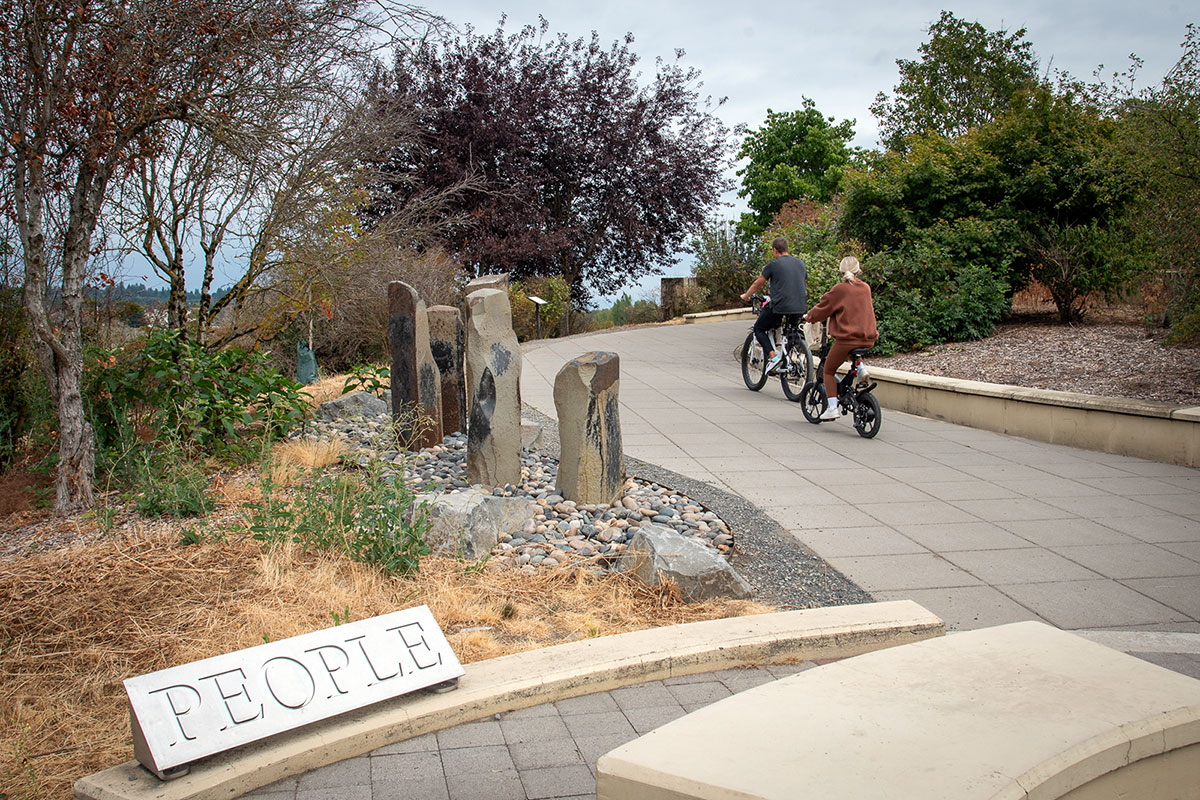
Located near the confluence of the Willamette and Columbia rivers, the Vancouver Land Bridge merges rivers, land, people, and trade.

